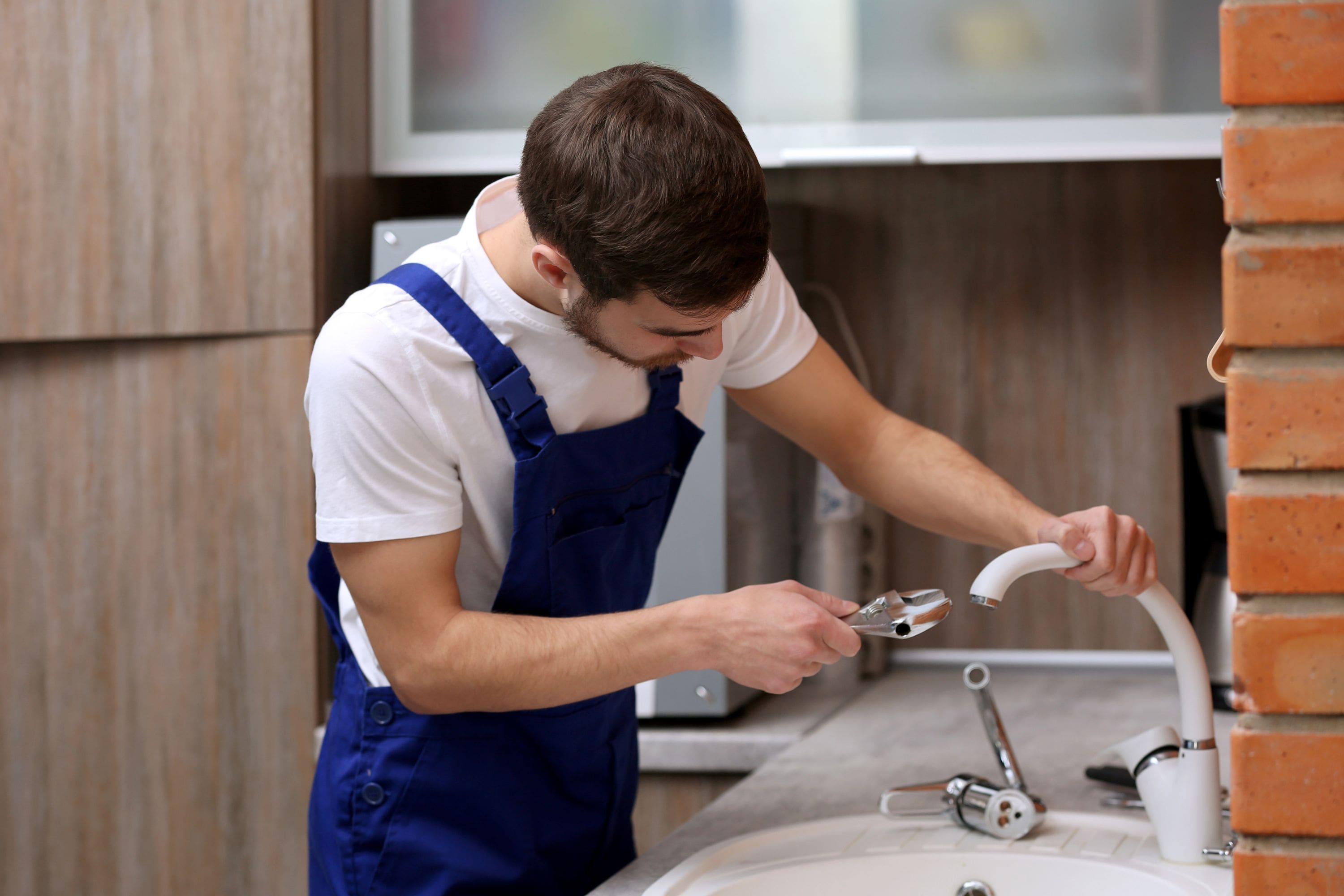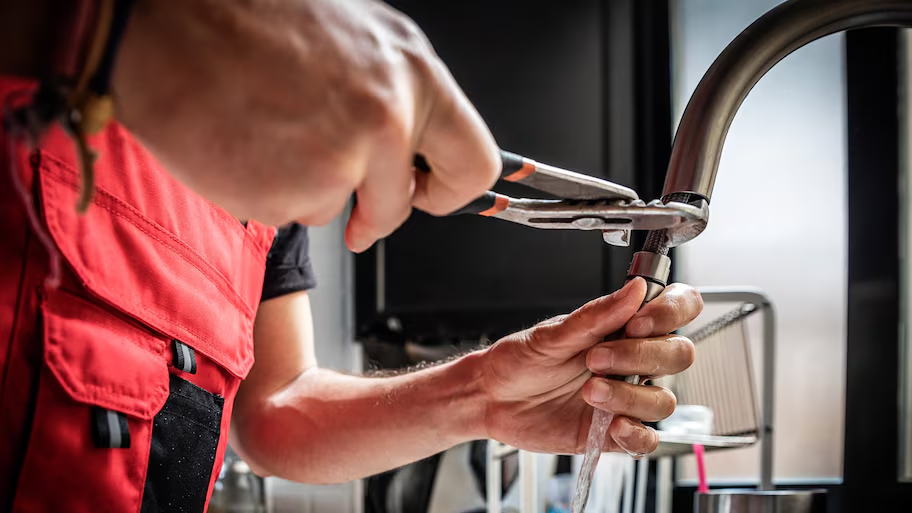My Reasons Behind Fixing a Faulty Faucet
My Reasons Behind Fixing a Faulty Faucet
Blog Article
We've come across the article relating to 4 Common Reasons for a Leaky Faucet listed below on the web and felt it made perfect sense to talk about it with you on this site.

Leaking faucets could feel like a minor hassle, yet their effect goes beyond simply the aggravation of the audio. From drainage to incurring unnecessary monetary prices and health and wellness threats, overlooking a trickling faucet can lead to numerous repercussions. In this article, we'll explore why it's vital to resolve this usual home issue without delay and properly.
Wastage of Water
Environmental Impact
Dripping taps contribute significantly to water wastefulness. According to the Epa (EPA), a solitary tap dripping at one drip per secondly can waste greater than 3,000 gallons of water annually. This not only strains water sources but also influences ecological communities and wild animals dependent on them.
Financial Prices
Increased Water Expenses
Beyond the ecological influence, dripping faucets can pump up water expenses significantly. The accumulated waste with time equates right into greater energy expenses, which might have been stayed clear of with prompt repairs.
Possible Home Damages
Furthermore, long term dripping can cause damage to components and surfaces bordering the faucet. Water buildup can create discoloration, rust, and even architectural concerns if left neglected, leading to additional repair service prices.
Wellness Issues
Mold And Mildew and Mildew Growth
The constant visibility of wetness from a leaking faucet creates a perfect atmosphere for mold and mildew and mildew development. These fungis not just endanger indoor air quality however also posture health threats, specifically for people with breathing conditions or allergies.
Waterborne Diseases
Stationary water in dripping taps can become a breeding place for bacteria and various other virus, increasing the danger of waterborne illness. Pollutants such as Legionella microorganisms flourish in stagnant water, possibly resulting in serious health problems when consumed or breathed in.
DIY vs. Expert Fixing
Pros and Cons of DIY Repair Work
While some may attempt to fix a dripping faucet themselves, do it yourself repair work come with their very own collection of challenges. Without proper knowledge and tools, do it yourself attempts can worsen the issue or cause incomplete repair work, lengthening the problem.
Benefits of Hiring an Expert Plumber
Hiring a professional plumber makes sure that the underlying source of the leaking faucet is dealt with successfully. Plumbing technicians possess the proficiency and tools to detect and fix tap problems effectively, saving time and lessening the risk of further damage.
Step-by-Step Overview to Fixing a Dripping Faucet
Tools Required
Before attempting to repair a dripping tap, collect the necessary devices, consisting of a flexible wrench, screwdrivers, replacement parts (such as washers or cartridges), and plumber's tape.
Common Faucet Issues and Their Solutions
Identify the sort of faucet and the certain problem creating the drip. Typical issues consist of worn-out washers, corroded valve seats, or malfunctioning O-rings. Refer to supplier directions or on the internet tutorials for detailed support on repair work.
Preventive Measures
Routine Maintenance Tips
To avoid dripping taps, carry out regular maintenance such as cleaning aerators, checking for leaks, and replacing worn-out parts without delay. Furthermore, consider installing water-saving devices or upgrading to much more reliable components.
Value of Prompt Repairs
Resolving trickling faucets as soon as they're observed prevents more water wastefulness and possible damages, ultimately saving both water and cash over time.
Influence On Building Value
Understanding of Well-Maintained Home
Maintaining a property in good condition, including resolving upkeep issues like dripping faucets, improves its viewed worth and desirability amongst potential buyers or occupants.
Impact on Resale Worth
Characteristics with well-maintained plumbing fixtures, including taps, command higher resale values in the real estate market. Dealing with leaking faucets can add to a positive impact throughout residential property examinations and arrangements.
Ecological Obligation
Private Contribution to Preservation
Taking obligation for dealing with leaking faucets lines up with wider efforts towards water conservation and ecological sustainability. Every individual's activities collectively make a considerable influence on protecting priceless resources.
Lasting Living Practices
By prioritizing punctual repair work and adopting water-saving routines, people contribute to sustainable living methods that profit both existing and future generations.
Final thought
Addressing a leaking tap exceeds plain comfort; it's a vital action towards preserving water, decreasing monetary expenses, and securing wellness and residential or commercial property. Whether via do it yourself repair services or specialist aid, doing something about it to repair dripping taps is a tiny yet impactful method to promote accountable stewardship of resources and add to a much healthier, extra sustainable future.
How to Fix a Leaky Faucet: Step-by-Step Repair Guide
A leaky faucet may seem like a simple annoyance, but if it's not fixed promptly, that leak could cost hundreds to potentially thousands. From water damage to mold, mildew, and high water bills, even a tiny leak can be catastrophic if left unattended. Damage like this can even affect the overall value of your home, so it's important to take the right approach for leaky faucet repair. You may need the help of a plumber in some cases, but we've got a few tips you can try on how to fix a leaky faucet before calling the pros.
Four Faucet Types
When you're learning how to fix a leaky faucet, the first step is knowing what kind of faucet you're working with! There are four common types.
Cartridge Faucets
Cartridge faucets come in one- or two-handled varieties. In one-handled cartridge faucets, hot and cold water combines in a single cartridge. In the two-handled versions, hot and cold water are controlled separately and mixed in the faucet.
Ball Faucets
Ball faucets have a single lever you push up and down to adjust the pressure and rotate to change the temperature. A slotted metal ball controls the amount of water allowed into the spout.
Compression Washer Faucets
They're the oldest type of faucet, but they're still used in many homes — especially older ones. Compression faucets have two separate handles that, when turned, raise or lower the washer that seals a water valve. This valve stops water from flowing through the faucet when it is turned off.
Disc Faucets
Disc faucets rarely need to be repaired due to their maintenance-free design. The water flow is controlled by two discs — the upper one raises and lowers against a fixed lower disc, creating a watertight seal. If your disc faucet starts leaking, you may need to replace the seals or clean residue buildup from the inlets.
Fixing a Leaky Faucet
Step 1: Turn Off the Water
Whether you're learning how to fix a leaky bathtub faucet or how to fix a leaky kitchen faucet, always turn off the water supply to your working area when you're fixing a leak. The last thing you want is a flood added to your list of things to fix.
Look for the shutoff valves below your sink or around the tub and turn them clockwise to stop the water flow. If your faucet doesn't have shutoff valves, you may need to turn off the water for the whole house. Check to make sure it's off by turning the faucet on. If nothing comes out, you're ready to start the repair.
Step 2: Take Apart the Faucet
How you disassemble your faucet depends on the type of fixture you have. You can use a flathead screwdriver to remove the caps on top of the handle or handles for cartridge and compression faucets. Inside, you should see handle screws. Unscrew these with a screwdriver to remove the handle.
Disc- and ball-style faucets will typically have an inlet screw near the handle, and removing that will reveal the interior of the faucet.
Detach the Valve Stem
For cartridge- and compression-style faucets, you'll see the inner valve stem or cartridge once you remove the faucet handles. If you have a compression faucet, unscrew the brass valve stem. If you have a cartridge faucet, pull out the cartridge. If your cartridge has been in place for a while, it may require some tools or extra force to remove it due to mineral deposits.
Examine and Replace Parts
Once you've removed the parts, check them out to confirm what needs to be replaced. You may see corroded rubber washers, O-rings, stems, or cartridges. On a ball-style faucet, check the seats and springs for damage.
If you need to repair a leaky disc faucet, check the inlet and seals on the lower disc.
Once you determine what parts must be replaced, visit your local hardware store. Bring the damaged parts with you to ensure you can purchase the correct components to replace them.
Clean Valves and Faucet Cavity
If you've removed a stem or cartridge, you may notice mineral buildup in the faucet's threads. Use white vinegar to clean the valve seat by soaking it for a few minutes, then scrub it away with a soft toothbrush and rinse with warm water. You can also clean the interior of the faucet in the same way.
Reassemble the Faucet
Once your faucet is cleaned and the required parts have been replaced, it's time to reassemble it. Put the pieces back together and slowly turn the water supply back on. Doing this slowly is crucial because too much initial water pressure can damage the new hardware you've just installed.
https://homewarranty.firstam.com/blog/how-to-fix-leaky-faucet

We hope you enjoyed our excerpt on Why Is It Important To Fix Your Leaking Tap/Faucet?. Thanks for finding the time to browse our article post. Are you aware of another individual who is excited about 4 Common Reasons for a Leaky Faucet? Take a moment to share it. Thank you so much for going through it.
Report this page